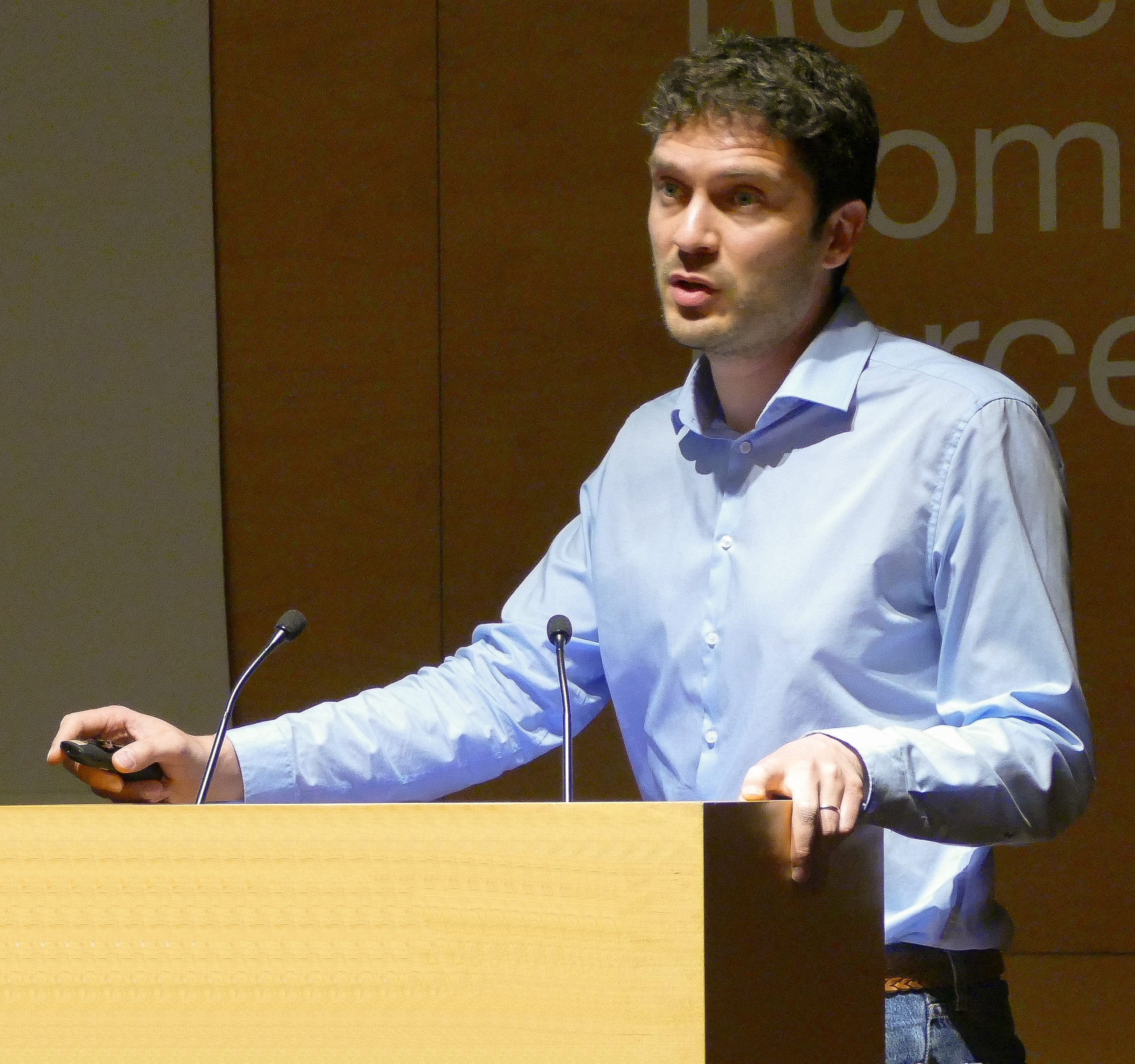In May, the Hospital del Mar Medical Research Institute (IMIM) held the third edition of the “IMIM Retreat“, a day in which the most relevant projects of each of the center’s research groups are shared. IMIM’s research groups are divided into six areas:
- Cancer
- Epidemiology and Public Health
- Biomedical Informatics
- Neurosciences
- Inflammatory and Cardiovascular Disorders
The purpose of this annual initiative is to create new connections and strengthen links among the different groups, as well as promote the exchange of scientific information.
In this article, we highlight a couple of projects that are being carried out at the IMIM, specifically in the Epidemiology and Public Health program.
Suicide amongst university students: prevention and barriers
Philippe Mortier, postdoctoral researcher at the IMIM Health Services group, presented a study on the barriers in the treatment of suicidal thoughts and behaviors amongst first-year university students.
The researcher stressed the importance of studying mental disorders in this group of people, since suicide is the second cause of death in young people, from 15 to 20 years old. Unfortunately, the vast majority of those affected are not treated. In his study, Mortier analyzes the possible barriers when it comes to treatment.
While we could think that structural barriers, that is, lack of access to treatment, would be the main obstacle, the study confirms that attitude barriers are, instead. Attitude barriers refer to the difficulties experienced by the individual as a result from not understanding, confusing or ignoring the disorder (see here for a guide to understanding self-harm & addiction). Often, those affected prefer to face the problem by themselves, without having to communicate it to the people around them.
Suicide is the second cause of death in young people, from 15 to 20 years old. In this study, researchers have implemented a digital intervention that consists of online modules based on cognitive-behavioral therapies.
In order to help students who maya not want to share their problems with others, Mortier and his collaborators have implemented a digital intervention. Surveys are sent to students to assess their mental health. After that, students can access a series of online modules based on cognitive-behavioral therapies. The module to treat depression, for example, lasts 8 weeks and each module (one per week) focuses on a different aspect of depression.

“The advantage of digital modules is that you can reach many students, while with the common therapy, many patients do not receive help on time.”
Philippe Mortier
Surveys were sent to almost 14,000 first-year undergraduates, from 19 universities distributed in 8 different countries (Australia, Belgium, Germany, Mexico, Ireland, South Africa, Spain and USA). The study has been carried out within the initiative World Mental Health International College Student (WMH-ICS).
“Through videos, audios and textbooks we explain what depression is, what its symptoms are … And it helps people to better understand what is affecting them. There is the option of visiting a specialist, as well. However, the advantage of digital modules is that you can reach many students while, with the common therapy, many patients do not receive help on time or they simply can not afford it”, confirms Mortier.
The results of the digital intervention show that almost 25% of the students participating in the study would seek treatment if they had an emotional problem in the future. On the other hand, the main reasons why individuals would not seek treatment are: the preference to treat the problem by themselves (almost 57% of students) and the preference to talk exclusively with friends or relatives (almost 50%).
Maternity leave in health workers
Consol Serra, coordinator of the Social Epidemiology and Occupational Health group of the IMIM, presented a study on maternity leave in 428 workers of the Parc Salut Mar between 2010 and 2014. They followed-up the women, noting the types of leave they took during the entire period of their pregnancy until the moment of childbirth.
During this period, women can opt for two types of benefits to protect their health and that of the fetus. One is for health problems not related to work, and the other is to prevent women from being exposed to some risk factor at work (PRE – provision for risk during pregnancy). The first is managed by the public health system, while the second is managed by insurances, “a fact that hinders efficient administrative management of the situation”, Serra emphasizes.
Serra and her team have observed that most of the workers maintain their work activity during pregnancy, and only around the third trimester absences increase, especially due to illness. In fact, during the last month, more than 80% of the health workers studied were on leave. Only a third part of the leaves were due to prevention of exposure to occupational risks. Researchers consider that this may be due to the fact that obtaining sick leave may be easier from the administrative point of view, compared to the PRE, thus encouraging women to visit the family doctor instead of the occupational doctor.

“This study can help guide policymakers to further improve social protection and, in the case of pregnancy, improve social welfare.”
Consol Serra
Not all hospitals manage pregnancy leaves in the same way as in the Parc Salut Mar. Serra says that there are hospitals where a pregnancy automatically means an absence for preventing risks. “Women initiate a PRE during the first months of pregnancy, and this has costs. Going home too soon may not always be the best option. Obviously, they must be protected but in the right measure. This is what we want to look at with other hospitals that have a different point of view in this management”, explains de doctor. Moreover, they want to study other sectors in which the risks would also be different.
The fact that they have shown that most workers ask for a leave during the last month of pregnancy, researchers say, means a new opportunity to modify the current maternity leave regulation.
Ebert DD, Mortier P, Kaehlke F, Bruffaerts R et al. Barriers of mental health treatment utilization among first-year college students: First cross-national results from the WHO World Mental Health International College Student Initiative. Int J Methods Psychiatr Res. 2019;28:e1782. doi: 10.1002/mpr.1782
Villar R et al. Prestación por riesgo durante el embarazo e incapacidad temporal en una cohorte de trabajadoras del Parc de Salut Mar (Barcelona, España). GacSanit. 2017. doi: 10.1016/j.gaceta.2018.03.003







